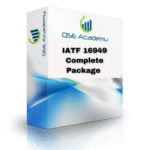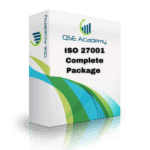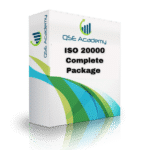The Top 5 Most Surprising BRC V9 Audit Findings – and How to Avoid Them
Are you a quality manager or business owner striving to keep your company compliant with the latest food safety standards? If so, you’re probably aware of the BRC Global Standard for Food Safety Issue 9 (BRC V9). This standard has a few surprises up its sleeve when it comes to audit findings. In this blog post, I’ll share the top 5 most surprising BRC V9 audit findings and how you can avoid them. As an ISO food safety consultant with 15 years of experience, I’m here to help you navigate the complexities of food safety regulations.
1. Inadequate traceability and recall procedures
The first surprising finding is inadequate traceability and recall procedures. A proper traceability system is crucial to minimize the impact of any potential food safety incident. When a well-known USA company faced a recall due to undeclared allergens, its traceability system fell short, resulting in delayed product withdrawal and significant financial losses.
To avoid this issue, ensure that your traceability system can quickly identify affected products and that your recall procedures are tested regularly. Implementing a mock recall exercise at least once a year can help you refine your processes and ensure that you’re prepared for a real recall situation.
2. Insufficient environmental monitoring
The second surprising finding is insufficient environmental monitoring. In one case, a food manufacturing company in the USA faced severe consequences after an unannounced BRC V9 audit revealed inadequate environmental monitoring practices. The company had not identified potential contamination risks and failed to implement appropriate control measures.
To avoid this issue, perform a thorough risk assessment and establish a robust environmental monitoring program. Be sure to include sampling and testing of air, water, surfaces, and equipment to identify potential contamination sources. Regularly review and update your program to ensure it remains effective.
3. Incomplete supplier approval and monitoring
The third surprising finding is incomplete supplier approval and monitoring. A major USA food manufacturer found itself in hot water after an audit revealed that they had not adequately assessed their suppliers’ food safety management systems, resulting in non-compliant raw materials entering their production chain.
To avoid this issue, establish a robust supplier approval and monitoring process that includes verifying your suppliers’ compliance with applicable food safety standards. Regularly review and update your supplier approval criteria and maintain open communication with your suppliers to ensure their ongoing commitment to food safety.
4. Insufficient training and competency assessment
The fourth surprising finding is insufficient training and competency assessment. A BRC V9 audit of a renowned food production company in the USA uncovered that employees had not received adequate food safety training, leading to numerous non-conformities.
To avoid this issue, develop a comprehensive training program that covers all aspects of food safety and quality, including HACCP principles, allergen management, and GMPs. Regularly assess the competency of your employees and provide refresher training as needed to ensure they remain up-to-date on the latest food safety requirements.
5. Inadequate management commitment
The fifth surprising finding is inadequate management commitment. During a BRC V9 audit, a USA-based food company was found to have insufficient senior management involvement in food safety and quality management activities, resulting in a lack of resources and ineffective systems.
To avoid this issue, ensure that your senior management is actively engaged in setting food safety objectives, providing necessary resources, and reviewing performance. Implementing a formal management review process can help demonstrate your company’s commitment to food safety and continuous improvement.
To wrap up, the top 5 most surprising BRC V9 audit findings are inadequate traceability and recall procedures, insufficient environmental monitoring, incomplete supplier approval and monitoring, insufficient training and competency assessment, and inadequate management commitment. By addressing these areas proactively, you can ensure that your company is well-prepared for a BRC V9 audit and maintain a strong food safety culture.
How to build a Strong Food Safety Culture?
Besides addressing the most surprising audit findings, fostering a strong food safety culture within your organization is critical to maintaining compliance with BRC V9 and other food safety standards. A food safety culture encompasses the attitudes, beliefs, and values that guide your employees’ actions and decision-making in relation to food safety. Here are a few tips to strengthen your food safety culture:
Communication:
Clear and open communication across all levels of your organization is essential for promoting a strong food safety culture. Ensure that food safety policies and expectations are well-communicated and easily accessible to all employees. Regularly update your team on changes in food safety regulations and industry best practices.
Empowerment:
Encourage employees to take ownership of food safety by empowering them to identify and report potential issues. Provide opportunities for employees to contribute ideas and suggestions for improving food safety processes and practices.
Recognition and rewards:
Acknowledge and reward employees who demonstrate exceptional commitment to food safety. This can help motivate your team and reinforce the importance of maintaining a strong food safety culture.
Continuous improvement:
Strive for continuous improvement by regularly reviewing and updating your food safety management system. Analyze audit findings and other performance data to identify areas for improvement and implement corrective actions as needed.
Leadership:
Lead by example and demonstrate your commitment to food safety by actively participating in food safety initiatives and regularly communicating the importance of food safety to your team.
Investing time and resources into building a strong food safety culture can significantly reduce the risk of non-conformities during a BRC V9 audit, protecting your company’s reputation and ensuring the safety of your products.
What are the External Support and Resources?
In addition to implementing the strategies discussed in this blog post, there are external resources available to support your food safety efforts. Professional organizations, such as the International Association for Food Protection (IAFP) and the Safe Quality Food Institute (SQFI), offer valuable resources, including educational materials, webinars, and conferences, to help you stay informed about the latest developments in food safety.
Moreover, joining industry forums and networking with other professionals can provide valuable insights and opportunities for collaboration. Sharing experiences and best practices with your peers can help you address common challenges and stay ahead of emerging food safety risks.
By proactively addressing potential audit findings, building a strong food safety culture, and utilizing external resources, your company will be well-prepared for BRC V9 audits and other food safety challenges. Remember that maintaining food safety is an ongoing process that requires commitment, communication, and continuous improvement. With the right approach, you can protect your customers, your company’s reputation, and your bottom line.
To Sum Up
Are you confident that your company is ready for a BRC V9 audit? Do you have any experiences or challenges you’d like to share? I’d love to hear from you in the comments below.
As an experienced ISO food safety consultant, I understand the challenges that businesses face in maintaining compliance with food safety standards. If you need assistance in preparing for a BRC V9 audit or need help with ISO documentation preparation, don’t hesitate to reach out. My expertise and services are designed to help you achieve and maintain compliance while safeguarding your customers and your company’s reputation.
Your food safety management system is only as strong as the documentation that supports it. Take the first step towards a more robust and compliant system by hiring me for your ISO documentation preparation needs. Together, we can ensure that your company is well-prepared for BRC V9 audits and any other food safety challenges that come your way. Contact me today to discuss how I can help you navigate the complex world of food safety regulations.
Did this blog post resonate with your experiences? Have you encountered any surprising BRC V9 audit findings that you’d like to share? Let’s start a conversation in the comments section – I’m eager to hear about your experiences and insights.
Looking for More Resources on BRC V9?
If you found this article helpful, explore our premium resources designed to help you achieve BRC V9 certification efficiently:
- 📦 Complete Documentation Package for BRC V9: Get all the essential templates and documents you need for fast, easy implementation.
- 🎓 Online Course on BRC V9 : Enroll in our comprehensive training to master the key concepts and practical steps toward certification.
- 📋 BRC V9 Checklist: Download our detailed checklist to ensure you’ve covered every step of the process.
These resources are tailored to meet your needs and ensure a smooth certification journey. Explore them today and get one step closer to success!






















